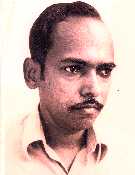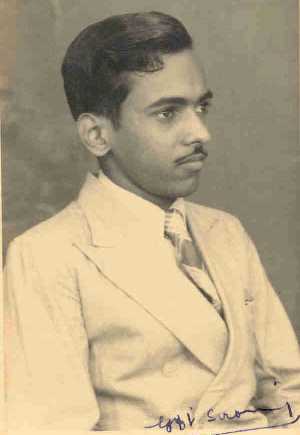

Home | Biodata | Biography | Photo Gallery | Publications | Tributes
Religion and Education

 |

Home | Biodata | Biography | Photo Gallery | Publications | Tributes Religion and Education |
 |
Life and Society. Scholarship on Hinduism is often focused on the study of philosophical Hinduism on the one hand and of popular Hinduism on the other. There are literary sources, ancient and medieval, which form the basis of the study of philosophical Hinduism. Popular or folk Hinduism is studied by observing the different practices over India.
In Hindu society people are divided into castes (varnas) on the basis of their birth. The Brahmans (also Brahmins) , who are scholars and priests, form the highest stratum, which itself is divided into castes. For instance, among the Brahmans, the worshipers of Vishnu form a separate caste and so do the worshipers of Siva. The warriors (Kshatriyas), the traders (Vaisyas) and the agriculturists ( Sudras ) form three more strata in which the agriculturists are of a rank lower than the warriors. The rest of the population forms the fifth and the lowest stratum. Those of this section are outcastes -- outside the four main varnas of traditional Hindu Society. For many ritual purposes women are treated on a par with the fourth varna, the Sudras.The highest varna is that of the fair-skinned Brahman, whereas to the lowest varna (which literally means color) belong Sudras who are dark-skinned. The Brahmans refrain from consuming meat and liquor, whereas the outcastes partake of them. The outcastes have historically been regarded as "untouchables", although that distinction is now illegal under Indian law.
Rules of pollution and purity have a strong influence among the Hindus, especially in rural India. Some objects such as gold and silk cannot be polluted. Objects such as a dead body pollute other objects that come into contact with it. Fire and running water can remove pollution. A person touching a polluted object becomes polluted, and one can pollute another person by touch. The cow is treated with veneration, and products of the cow, including dung, are used to cleanse. Since a carcass is polluted, those whose work is to remove dead animals remain polluted and are treated as outcastes. There are detailed rules about the degrees of pollution and the remedies for removing each.
In modern India special efforts are being made to improve the position of the outcastes, renamed the Harijans (people of God) under reforms designed by Mahatma Gandhi (1869-1948). There are reservations in government jobs, and special scholarships for their children, and they are listed as "scheduled" castes or tribes. The Harijans who become Christians or Muslim converts are not eligible for such scholarships. Many state governments also give scholarships and provide reservations in educational institutions to people classified as "backward classes", and Christians and Muslims are eligible for these. There is also official encouragement for intercaste marriages.
Religious Beliefs. Among the Hindu scriptures the four parts of the Veda -- Rig,Yajur,Soma,and Atharva -- are the most important. They were composed in Sanskrit over 3000 years ago and are passed on from generation to generation by oral tradition. Among the important gods of the Vedic religion of the Indo-Aryans are Agni (fire), Vayu (wind), Varuna (sea) and Indra (mountain, thunder, and rain). The practice of fire worship has continued over the centuries, and has a place on the marriage rituals of the higher castes even today. Hinduism gives highest importance to the worship of three deities -- Siva, Vishnu, and Sakti.
The adherents of Siva are called Saivites, and there have been many sects within Saivism. The sect called the Vira Saivas worships Siva alone. But this still is a broad classification which includes the worshipers of Shanmuga and Ganesha, who are treated as sons of Siva. Parvati, the daughter of the mountains, is treated as a consort of Siva. Thus different faiths are absorbed into Saivism as sects through the mechanism of family relationship among deities.
The adherents of Vishnu are the Vaishnavites. Sri Devi (also called Lakshmi, the goddess of wealth) and Bhu Devi (earth) were once independent deities but now are worshiped as consorts of Vishnu. Vishnu is believed to have had 10 major avatars or incarnations, including different animal forms, such as the fish, the boar, and the tortoise. His human forms include epic heroes such as Rama, the hero of Ramayana, Krishna of the story of Mahabharata, and one historic person, Siddhartha Gautama or the Buddha. By this mechanism of avatar, Buddhism could be partly absorbed into Vaishnavism.
Sakti (lit."power") is a general name for female deities. Parvati, the consort of Siva, is worshiped in different forms. In South Indian villages, the worship of the Seven Virgins, who are also consorts of various male deities, is fairly common. Worship of Kali is practised throughout India, and animal sacrifices are associated with Kali worship. During the medieval times warriors would immolate themselves before an image of Kali for the prosperity of their nation.
In rural areas there are many non-Brahman priests. Recent studies in the villages of the state of Tamil Nadu (Madras) have identified several thousand gods and goddesses who are worshiped as part of the folk tradition. Some deities are worshiped by individual families, some by certain castes, and some by a whole village. Village deities may be worshiped in certain regions during an epidemic, drought, or famine. Guardian deities are worshiped as protectors of individual villages, often with annual festivals of singing and dancing. Village deities, in general, have their place outside Brahmanism. Animal sacrifices were once common in village festivals, but over the years the practice has slowly diminished.
Among the different schools of philosophical Hinduism, Vedanta is widely known. Sankara, a Saivite reformer of the 9th century propounded his philosophy of advaita or nonduality. Brahman is the principle of reality coexisting with maya or unreality. Ramanuja, a Vaishnavite reformer of the 12th century, taught a philosophy of vishistadvait (modified nonduality) in opposition to advaita. During the 14th century, Madva preached the philosophy of dvaita or pure duality. He held that the Supreme Being and the soul are different from matter which is real and eternal. To the Saivite the Supreme Being is Siva but to the Vaishnavite it is Vishnu.
Both Saivism and Vaishnavism also have strong traditions of devotion or bhakti. As part of the bhakti movement, their saints went from place to place singing devotional songs at every major shrine. Their songs in the Tamil language have been collected and are still used for devotion and worship. The classical music and dance of India are highly devotional.
Painters and sculptors have left a rich variety of themes. The bronze sculptures of South India made by the lost wax process are known for there exquisite craftsmanship. Sculptor craftsmen could choose from specific forms set out in literary works on iconography. Each deity was distinguished by its special emblems. For example, Siva is shown holding a trident and an ax, and Vishnu is shown with a shell and a discus. The discus was used on the battlefield as a weapon and the conch shell as a trumpet. Rama is shown with a bow and arrow, Durga with the same emblems as Vishnu, and Kali with the emblems of Siva.
The devotees of Vishnu at the time of rituals wear a special "V"-shaped mark chalked in white with a vertical red (or yellow) stroke in the middle on their forehead and sometimes on their forearms. There are subtle variations in the mark to distinguish northern from southern sects of Vaishnavites. Two white vertical bars represent the feet of Vishnu planted on the forehead of the devotee, indicating complete submission. The devotees of Siva display three horizontal lines across the forehead. Priests and artisans and others who claim high status in society wear the sacred thread across their chest. .
Bibliography. Religion and Society, (Journal of the Christian Institute for the Study of Religion and Society); F. Kingsbury and G. E. Phillips, Hymns of the Tamil Saivite Saints( 1921); C. G. Diehl, Instrument and Purpose (1956); R. C. Zaehner, Hinduism (1962); A. L .Basham, The Wonder That Was India (3rd ed.,1967); T. A. Gopinatha Rao, Hindu Iconography, 2 vols. (repr.,1971); D. L. Gosling, Science and Religion in India (1976); H. Whitehead, The Village Gods of South India (rev.ed. 1976); K.M. Sen, Hinduism (1982); C. Srinivasa Rao, Vedanta: Some Modern Trends(1982); S. Weightman, A Handbook of Living Religions (1984).